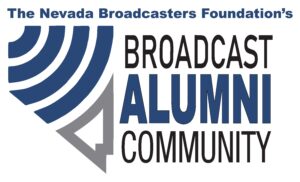
With the end of summer upon us, we begin to look forward to the regulatory issues that will face broadcasters as we barrel toward the end of the year. One date on many broadcaster’s minds is the date by which the annual regulatory fees will be due to be paid. While the payment date is almost certainly going to be sometime in September, look for an FCC decision on the amount of those fees at some point in late August. As we wrote in last week’s summary of regulatory actions (and in many before), the amount that broadcasters will pay remains a matter of dispute, so watch for the resolution of that dispute by September, as fees must be paid before the October 1 start of the FCC’s next fiscal year.
But many other dates of importance to broadcasters will occur well before the resolution of the regulatory fee issue. August 1 is the deadline for full power television, Class A television, LPTV, and TV translator license renewal applications for stations in California. As we have previously advised, renewal applications must be accompanied by FCC Form 2100, Schedule 396 Broadcast EEO Program Report (except for LPFMs and TV translators). Stations filing for renewal of their license should make sure that all documents required to be uploaded to the station’s online public file are complete and were uploaded on time. Note that your Broadcast EEO Program Report must include two years of Annual EEO Public File Reports for FCC review, unless your employment unit employs fewer than five full-time employees. Be sure to read the instructions for the license renewal application and consult with your advisors if you have questions, especially if you have noticed any discrepancies in your online public file or political file. Issues with the public file have already led to fines imposed on TV broadcasters during this renewal cycle.
August 1 is also the deadline by which radio and television station employment units with five or more full-time employees licensed to communities in California, Illinois, North Carolina, South Carolina, and Wisconsin must upload Annual EEO Public Reports to station online public inspection files and websites.
This year, August 1 happens to be the deadline for many other regulatory filings. Television stations with locally-produced programming whose signals were carried as distant signals by at least one cable or satellite system in 2021 must file their copyright royalty claims with the Copyright Royalty Board (“CRB”) by August 1 (as the normal July 31 deadline falls on a Sunday). Stations that had local programming imported as a distant signal in 2021 who register by the August 1 deadline become eligible to share in the distribution of the fees paid by cable and satellite television providers for the right to carry these distant signals. The CRB requires that these filings be made online through the eCRB system (further information is available here).
August 1 is also the deadline for Reply Comments on the FCC’s Notice of Proposed Rulemaking proposing to authorize LPTV stations operating on TV channel 6 to continue to provide an analog audio stream that can be received on FM radios at 87.7. The Notice also asks for comments as to whether Channel 6, in geographic areas where it is not currently used for TV services, should be repurposed for FM use (a proposal that has previously been advanced by the FCC, see our Broadcast Law Blog article here on previous FCC requests for comment on this issue).
Another August 1 deadline is that for the Reply Comments on the FCC’s Office of Economics and Analytics annual call for comments on the State of Competition in the Communications Marketplace. These comments are used to prepare a report to Congress on communications competition issues and are sometimes referenced by the FCC itself in proceedings dealing with competition issues. The FCC seeks comments on a list of questions about competition in both the Video and Audio marketplaces, including the impact of digital competitors on traditional providers and the role that regulation plays in the competitive landscape (Public Notice).
The last August 1 deadline is that for Reply Comments on the FCC’s Further Notice of Proposed Rulemaking on unlicensed “white spaces” devices that operate in the TV Band. The FCC earlier this year adopted new rules that require fixed and certain personal/portable white space devices to check white space databases at least once per hour for other spectrum users to be protected from interference, replacing a prior rule that had not been enforced requiring the databases to push information to white spaces devices whenever there was a new wireless microphone or other protected use in the area in which the white space device was operating. This Further Notice seeks comments on whether “unlicensed narrowband white space devices” should be subject to the same hourly requirement to check white space databases as other users or whether some other monitoring obligation should apply.
August 8 is the deadline for comments on the FCC’s Third Further Notice of Proposed Rulemaking in which it seeks comment on the state of the Next Generation Television, or ATSC 3.0, transition and on the scheduled sunsets of two rules adopted in 2017. First, the FCC seeks comment on the progress of broadcasters’ voluntary, market-driven deployment of ATSC 3.0 service and the current state of the ATSC 3.0 marketplace. The first rule on which the FCC seeks comment is the scheduled 2023 sunset of the requirement that a Next Gen TV station’s ATSC 1.0 primary video programming stream be “substantially similar” to its 3.0 primary programming stream. The FCC also seeks comment on the scheduled 2023 sunset of the requirement that a Next Gen TV station comply with the current ATSC A/322 technical standard. Additionally, the FCC seeks comments on whether the technology for ATSC 3.0 has been made available on fair terms by the patent holders for that required technology. Replies in this proceeding will be due on September 6.
Also due this month, on August 22, are Reply Comments on a proposal for the FCC to begin a rulemaking to consider the adoption of a new Content Vendor Diversity Report. A public interest group has asked the Commission to require this report to gather information on the race and ethnicity of employees and senior leadership of vendors of video content to both traditional media and streaming services. The requested comments are meant to inform the FCC as to whether it should move forward to review this proposal. (Request for Comments)
The final comment date of note is August 29, when comments are due on a Notice of Proposed Rulemaking on whether to update FCC rules to identify a new Nielsen publication for determining a television station’s designated market area (“DMA”) for satellite and cable carriage purposes. Nielsen has notified the FCC that it will no longer publish its Station Index Directory, which has historically been used in combination with the Nielsen Station Index and United States Television Household Estimates to determine a station’s DMA for carriage purposes. Reply Comments in this proceeding will be due September 26.
Throughout the month, beginning on August 8, the many radio stations whose license renewals were granted in the last year subject to a consent decree requiring reporting on political file uploads need to start compiling information about those political orders for their year-end report. That report is due on December 9. The report contains not only information about the timeliness of political file uploads for the three months prior to the November 8 election, but also the licensee’s compliance with the other obligations set out in the consent decree.
As always, this list of dates is not exhaustive. Always review these dates with your legal and technical advisors, and note other dates not listed here that may be relevant to your operations. Stay on top of all of your regulatory obligations even during the dog days of August!
Courtesy Broadcast Law Blog


